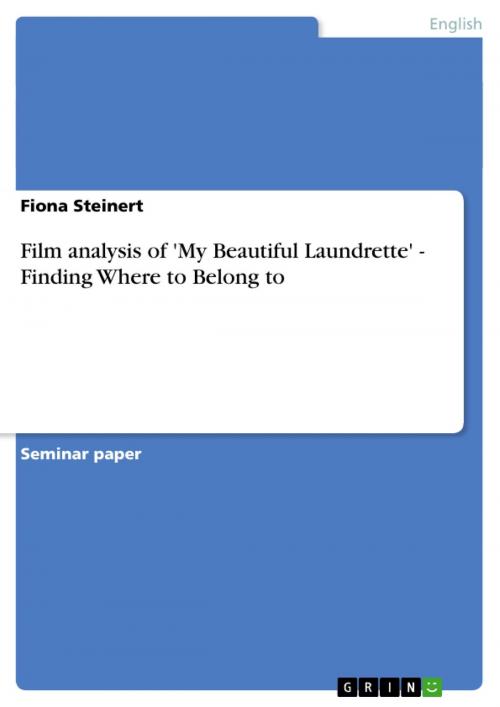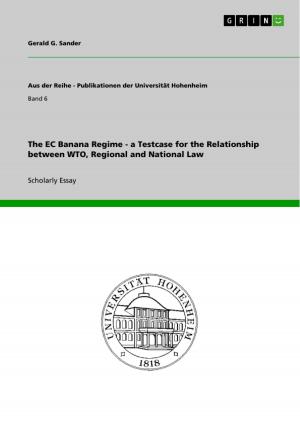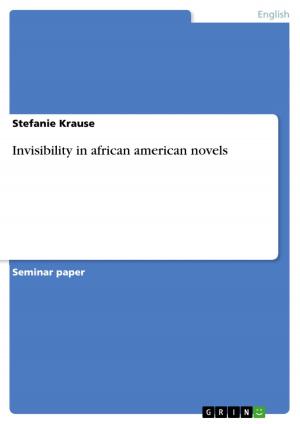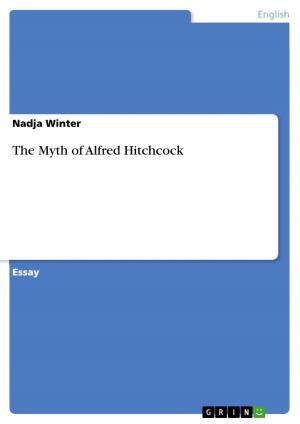Film analysis of 'My Beautiful Laundrette' - Finding Where to Belong to
Finding Where to Belong to
Nonfiction, Entertainment, Drama, Anthologies| Author: | Fiona Steinert | ISBN: | 9783640559633 |
| Publisher: | GRIN Publishing | Publication: | March 9, 2010 |
| Imprint: | GRIN Publishing | Language: | English |
| Author: | Fiona Steinert |
| ISBN: | 9783640559633 |
| Publisher: | GRIN Publishing |
| Publication: | March 9, 2010 |
| Imprint: | GRIN Publishing |
| Language: | English |
Seminar paper from the year 2007 in the subject English Language and Literature Studies - Other, grade: 1,7, University of Hannover, language: English, abstract: The movie 'My Beautiful Laundrette' based on the Hanif Kureishi's screenplay and directed by Stephen Frears made its debut in the British cinemas in 1985. It touches on various aspects of conflicts that minorities face. It adheres to sexual identity, class and racial problems by presenting many sorts of emotional bonding and the struggle to find one's right space in society. My focus will be on the narrative structure and the analysis of the characters' behaviours and actions, therefore I did not use many secondary sources. I am going to analyse the film by looking at three leitmotifs: 'love', 'success' and 'cultural rules of behaviour'. These leitmotifs are interrelated and often contradictory, which leads to many conflicts. The family love and support helps Omar achieve great success in his working class situation, which is backed with equal strength by his partner Johnny. Without Johnny he would have been unable to restore the laundrette. His success can also be seen as a result of the Pakistani code of behaviour where it is normal to give a relative a job if there is a chance to do so. However, the conventional rules of behaviour on both sides, Pakistani and British, stand against the relationship between Omar and Johnny and therefore also stand in the way of their success. All the characters present part of a subculture in which they have to strive harder than a middle-class person to be accepted by society. They have to face many boundaries and social problems. 'My Beautiful Laundrette' depicts these hard lives without playing on one's heart strings. It rather illustrates how it is possible to control one's own fate by making the most of the given situation and refraining from believing stereotypes.
Seminar paper from the year 2007 in the subject English Language and Literature Studies - Other, grade: 1,7, University of Hannover, language: English, abstract: The movie 'My Beautiful Laundrette' based on the Hanif Kureishi's screenplay and directed by Stephen Frears made its debut in the British cinemas in 1985. It touches on various aspects of conflicts that minorities face. It adheres to sexual identity, class and racial problems by presenting many sorts of emotional bonding and the struggle to find one's right space in society. My focus will be on the narrative structure and the analysis of the characters' behaviours and actions, therefore I did not use many secondary sources. I am going to analyse the film by looking at three leitmotifs: 'love', 'success' and 'cultural rules of behaviour'. These leitmotifs are interrelated and often contradictory, which leads to many conflicts. The family love and support helps Omar achieve great success in his working class situation, which is backed with equal strength by his partner Johnny. Without Johnny he would have been unable to restore the laundrette. His success can also be seen as a result of the Pakistani code of behaviour where it is normal to give a relative a job if there is a chance to do so. However, the conventional rules of behaviour on both sides, Pakistani and British, stand against the relationship between Omar and Johnny and therefore also stand in the way of their success. All the characters present part of a subculture in which they have to strive harder than a middle-class person to be accepted by society. They have to face many boundaries and social problems. 'My Beautiful Laundrette' depicts these hard lives without playing on one's heart strings. It rather illustrates how it is possible to control one's own fate by making the most of the given situation and refraining from believing stereotypes.















